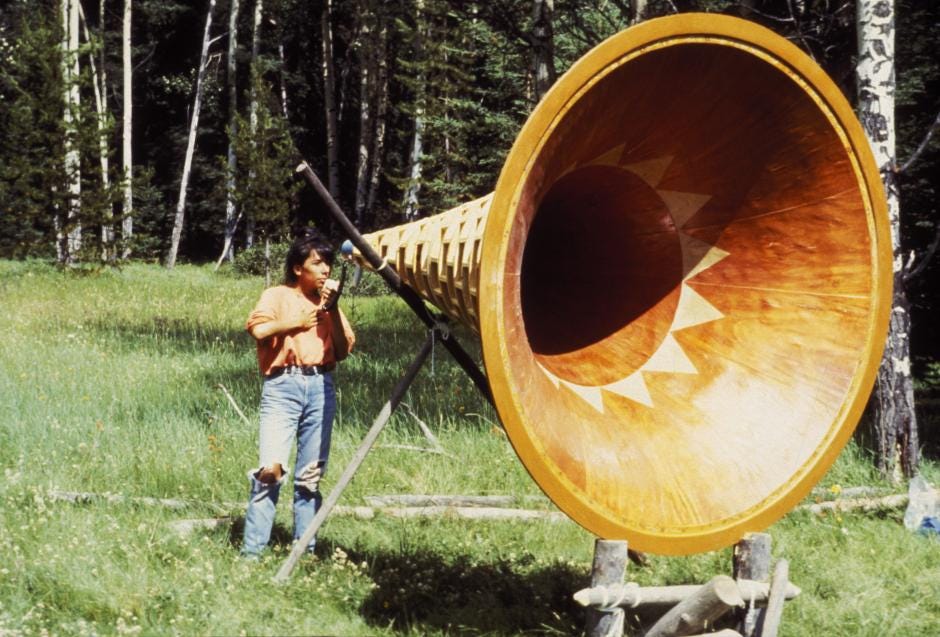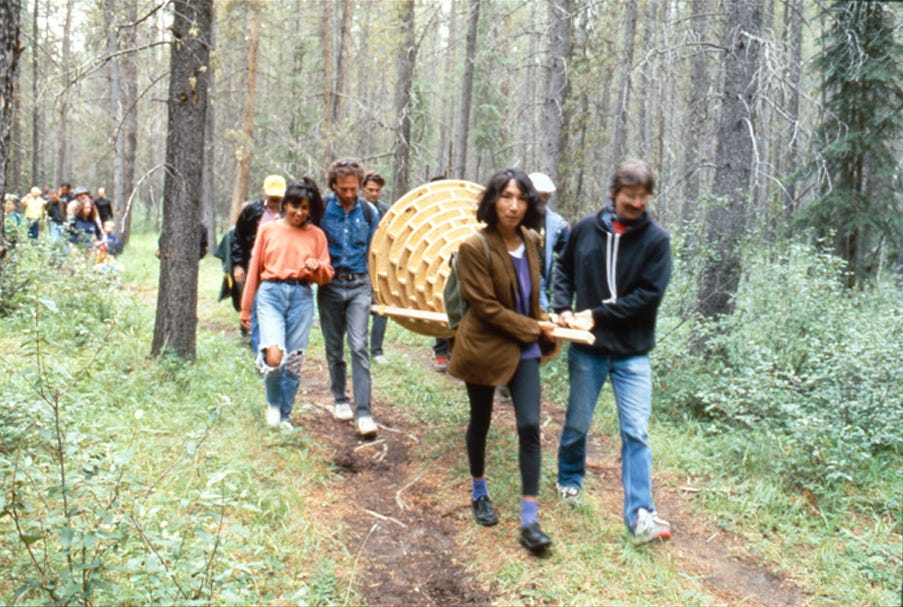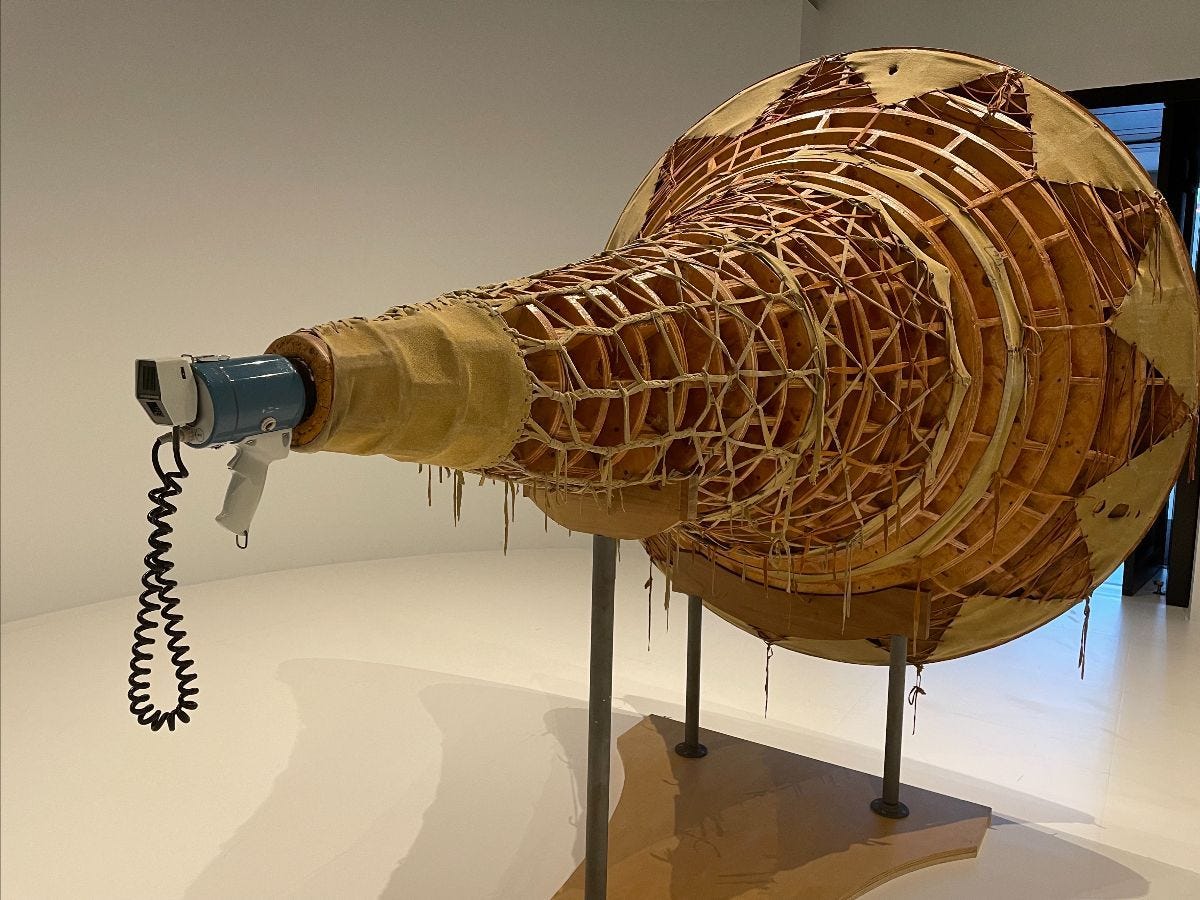Art for the Wilderness 7: Saying True Things
Celebrating the power of the human voice
This seven-week series explores what we can learn about navigating the wilderness from artists who engage with difficult experiences through their art.
Hello friend,
This is the last installment of Art for the Wilderness.
Our journey concludes with a megaphone.
Rebecca Belmore knew the power of the human voice.
The ‘Oka Crisis’ of 1990 was still fresh in her mind, where the proposed expansion of a golf course onto traditional Mohawk land outside of Montreal led to a tragic 78-day standoff between protesters and government forces. Belmore, an Anishinaabe artist, felt overwhelmed with rage. She was tired of Indigenous voices being silenced, of being told to accept the unacceptable. She imagined taking an enormous megaphone and pointing it at the capital building in Ottawa, her cries breaking in the windows.
But as the waves of anger passed, she was left with a new vision. She would take a megaphone, yes, but instead of pointing it at the government, she would turn it towards the land. She would offer it up to First Nations people so they "could speak to our Mother, to the earth, and feel positive about speaking out and not be afraid to speak out." She wanted to move the political into the realm of the poetic.
To create her artwork Ayum-ee-aawach Oomama-mowan: Speaking to Their Mother, Belmore elongated a megaphone with an enormous cone made out of wood and animal hides. For a year, she took her creation to First Nations communities across Canada, encouraging them to speak into the megaphone and to let their amplified voices dance across the surfaces of their lands.
Through her art, Belmore created a space where people could gather to speak truth: loudly, fearlessly, together.

Over the past seven weeks, we have practiced shifting how we pay attention in the wilderness. We have spent time sitting with despair, isolation, vulnerability, and inadequacy. And as we examined these shades of darkness, we tuned in to a deeper truth coursing below the surface: a voice that spoke of our goodness, our strength, our interdependence.
As we leave the wilderness, let’s allow that truth be the fuel for our own voices, as we proclaim our connectedness and reclaim our agency.
Because there is power in using our voices to say true things.
We are swimming in a sea of messages that try to tell us where our goodness is found, what we should want, what we must accept, what we have a right to claim. It is an act of courage to untangle ourselves from these stories and speak for ourselves.
Sometimes it feels like freedom, to boldly stand our ground. Sometimes it can feel like a violation, if we’re not used to claiming our space. As we persist, we get stronger in claiming where we want to root ourselves.
And there is power in proclaiming these truths in community.
We are bound up with each other; as said Nelson Mandela, "your freedom and mine cannot be separated." In this dynamic, we reach out to those around us, while knowing that we are held, too. This movement can be big and spectacular, like a gathering to shout into a megaphone, or impossibly small, like an encouraging text message.
And in those moments when there is no one around us, we can still speak out, trusting that our voice will reach another, across channels both mysterious and gracious.
As we go forward, let’s speak truth over ourselves and over each other, building something beautiful and expansive.

As this series comes to an end, I invite you to practice using your voice to speak true things.
A good place to start is with the stories you tell yourself about pain or discomfort. When you notice yourself feeling small, ashamed, powerless, or inadequate, examine the thoughts surrounding the feelings. Spend some time exploring what is most true (which is to say, most loving), and say it out loud.
This process starts internally, but it works its way outward. When we are in a sturdy stance, we are more open and available to translate our words into actions that, like Belmore's megaphone, can “help our communities to celebrate, to fight, to do all those things that art can do.”
It has been an honor to share this series with you over the past seven weeks. To quote Late Night, I hope I've earned the privilege of your time.
Remember, even in the wilderness, we have a voice.
Warmly,
KEEP EXPLORING
Watch this video from 1992 of a young Rebecca Belmore reflecting on her approach to making art (she moved me to tears) — and see the artwork in use
Learn more about the Oka Crisis, also known as the Kanesatake Resistance
Read Let This Darkness Be a Bell Tower, a short poem by Rainer Maria Rilke







